Donna Smallin Kuper's Blog: The One-Minute Organizer Blog, page 2
September 4, 2020
How to Protect Family Photos
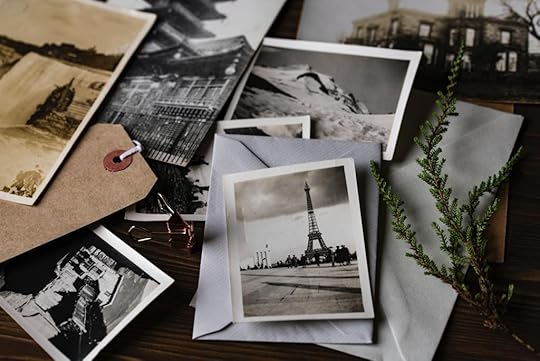
Most of us have photos stored away somewhere in our homes. You may have digital photos stored on computers, phones, CDs and thumb drives. Or you have print photos hidden in drawers or boxes in the attic or back of the garage. There is likely a mix of both for storing your precious memories.
These photos, home movies and memorabilia are priceless family keepsakes. They can, unfortunately, become easily damaged or destroyed by sunlight, heat, humidity, pests, poor handling and natural disasters. Take steps to protect these memories and declutter your life by treating your family photos and memorabilia with a little TLC.
Gone Forever When Disaster Strikes
If you live in an area prone to fire, flooding, hurricanes or tornadoes, you’ve likely had to evacuate or shelter to ensure you and your family remain safe. When disaster strikes is not the time to run around looking for your important family memorabilia. Now is the time to protect your collection of irreplaceable photos and preserve these memories for the future.
Start by gathering these items into one location. Get your print items digitized for storage on an external hard drive. Then transfer a copy of your digital photos to the same external drive. Keep the external hard drive in a fire safe or safety deposit box. All of this data should also be backed up to a cloud service as a secondary backup.
Don’t Add to Clutter and Stress
Print photos and albums stored in various boxes throughout the home not only add to the clutter and stress, but make it nearly impossible to enjoy the memories. The same idea applies to digital photos, which are often buried amongst your many other files. Sorting through your print and digital photos will make preserving those that tell a story that much easier.
You can start by removing photos that are duplicates, poor quality, or those that don’t add to the story. If you don’t remember who the people are in the photo, toss them. Combine and sort the photos chronologically or by events. Label these groups of photos and store them in archival-safe boxes.
Avoid storing these boxes in areas of your home that experience excessive heat, humidity and sunlight. Be sure to store them away from areas where the moisture from appliances, such as a dryer, can damage the photos.
Link Generations in a Deep, Personal Way
At some point in our lives, most of us have had the opportunity to look through previous generations of family photos. Seeing our parents and grandparents as children or the neighborhood before it was developed, provides a special glimpse at the family history that contributed to who we are today.
Digitizing these photos and backing them up on your external drive and on the cloud will protect family photos and preserve your family legacy. You can store older print photos in archival-quality sealed envelopes and place them inside archival-safe boxes for additional protection.
Photos that have already succumbed to environmental elements and appear damaged are not necessarily lost forever. Before you throw out these memories, consult a professional photo organizer or archivist, who may be able to digitally restore your treasures.
Take the First Step
Whether you hire a professional photo organizer to organize and preserve your family’s memories or you do it yourself, I encourage you to simply take the first step. Begin by evaluating your inventory of photos and memorabilia by gathering them all into one place. Then, start to remove the clutter and give your family story a chance to live for generations to come.
###
Rachel Arbuckle is a 2014 Cocos Fire survivor, Navy veteran and CEO of 2000 Paces Photo Organizing. She and her team work with clients to preserve photo and video memories before the fire season and throughout the year.
The post How to Protect Family Photos appeared first on Declutter Your Life with Donna Smallin Kuper.
August 28, 2020
Adapting Routines to Organize a Better Tomorrow

Over the last few months, you’ve probably noticed some major change in your routines, lifestyle, habits, and responsibilities. If you’ve felt a bit off track or lacked direction during this unprecedented crisis, you’re not alone. Following are six ways to get back into a routine – mentally and physically – and organize for a better tomorrow.
Start and End Your Day with Purpose
When life feels unpredictable or you’re going through a difficult time, it’s very easy to lose your motivation to maintain healthy habits. But those little routines can make a big difference in your overall well-being.
A great way to inspire yourself again is to adopt a morning and evening routine that prepares and energizes you. This isn’t something you need to spend hours doing. All it takes is a few minutes to calm your mind, allowing you to identify your specific needs.
Your morning routine might start the night before, allowing you to wake up feeling refreshed and clearheaded. There are many ways to re-introduce powerful habits to the start and end of your day that can set you up for success and productivity, even amidst challenging times.
Clear the Clutter
Most people function at their best when they feel organized, because being organized helps us to get things done more efficiently. Clearing clutter will also help to clear your mind. Ask household members for help in decluttering common living areas. Remember: if you don’t love or use something, it’s just taking up valuable space.
Sharing responsibilities in the home with your partner, kids, or roommate can be extremely effective at getting and staying organized. Make a list of regular chores that need doing and ask household members to commit to selected tasks. Even young children can help by putting their toys away and matching clean socks.
Create and Follow a Schedule
If you’re working from home, designate specific work hours. If you find yourself getting distracted or overwhelmed, take a mental break. Better yet, schedule breaks into your day. Set aside an hour in the morning or schedule a long lunch, or time to run errands or do a workout to clear your head.
Finish off your day with a scheduled activity to signal your workday is over. Hopefully, this is something you look forward to doing like going for a walk, preparing a nice dinner, or spending time on a hobby.
Get Your Finances in Order
One of the largest sources of stress even in the best of times is money stress, which is why it’s important to prioritize managing your money. Consider having a conversation with a financial advisor about your goals and how much money you will need to finance them.
Create a budget that allows for flexibility and enjoyment, but also puts you in the position to reach your intended milestones without feeling strapped financially. There are budgeting apps available that can track your spending to help you make intentional spending decisions.
Prepare for Uncertainty
As you’ve probably come to realize, life will throw you curveballs along your journey and you’ll have to learn to adapt. As much as we plan for the future, sometimes we’re forced to deal with unexpected situations involving family, health, careers, finances, and relationships. While you can’t predict exactly what’s in store for your future, you can prepare financially to allow for a smoother transition during these times.
It’s a good idea to have a conversation with those most important to you and discuss a plan for finances, insurance, and investments to protect them should something happen to you. Take this time to be proactive – maybe explore life insurance policies to protect your assets and provide peace of mind in the knowledge that your loved ones will be taken care of no matter what.
Set New, Short-Term Goals
Uncertainty can make it difficult to make long-term plans. But setting goals for your future is a strategy still highly recommended by professionals. Instead of focusing all of your attention on events that can happen years from now, which might seem unimaginable, consider planning a few months or even weeks down the road.
Begin by setting tangible, short-term goals that are within your reach. These goals don’t have to be groundbreaking, but might help to improve your relationship, your job, your mindset, and attitude. The more intentional goals you set out to achieve and follow through with, the more confidence you’ll have navigating this next chapter of your life.
As you continue to respond to a changing world, focus on the ways in which you can control your happiness and future. By organizing your own life and adapting healthy routines, you can rise above the chaos and reach your goals—even if that path looks a little different than you originally imagined. Stay consistent and focus on all you do have and the future might turn out even better than you pictured.
Photo by AbsolutVision on Unsplash
The post Adapting Routines to Organize a Better Tomorrow appeared first on Declutter Your Life with Donna Smallin Kuper.
August 12, 2020
Why is it So Hard to Get Rid of My Stuff?
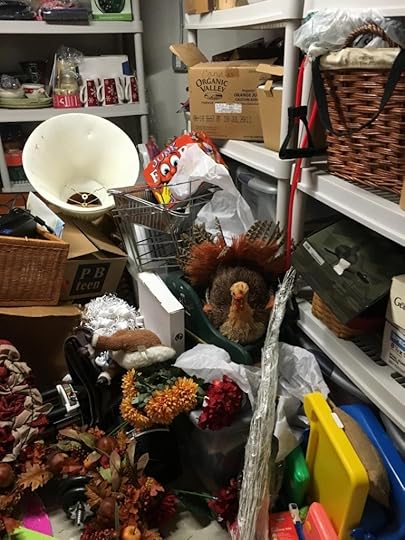
This past week, I was working with a new client, helping her edit and organize her wardrobe. In the process of going through items, she turned and asked me, “Why do people keep so much stuff? And why is it so hard for people to get rid of things?” I will share with you what I told her.
Many people are emotionally attached to their positions. It can be difficult to part with things, especially those that have had a place in your life. People have a variety of reasons and rationale for holding on to things.
Excuse #1: It Was Expensive
It may be true that you paid a lot of money for an item, but that, in and of itself, is not a reason to keep it if you aren’t using it or you don’t love it.
When I teach classes on organizing, I often tell my students that regardless of whether the item is used daily, is sitting on a shelf in your basement collecting dust, is given to a friend, or is donated or thrown away, in none of those scenarios does the money magically reappear in your wallet. The money is (long) gone, so don’t use that as the excuse to keep your purchase.
Instead, think about that wasted money the next time you are shopping on-line or in a store; determine if the thing you are considering buying will get enough use to justify pulling out your wallet or credit card.
Excuse #2: It Was a Gift
Sometimes you have to keep “the thought behind the gift,” but not the physical gift itself, especially if you don’t need, use or love it.
My belief is that once someone gives you a present, they lose control over the item; they do not get to determine whether you keep it, or what happens to it. Most people don’t even remember what they gave you for your birthday or Christmas five years ago.
In the unlikely event that they do, they probably aren’t tacky enough to ask where it is. But, if they are, in that case it’s okay to tell a little white lie – “oh, we were so upset when Fluffy knocked it off the counter and it broke!”
Excuse #3: Every Time I Get Rid of Something, I Need It a Week Later
Yes, it is possible that after you spend a great deal of time sorting, organizing, and editing your things, you may find a use for something you chose to discard. But here’s the thing. If you hadn’t just spent the time sorting through the clutter, you probably wouldn’t even remember that you owned said item. Or, if you did remember, the likelihood is that you wouldn’t have known where it was or been able to put your hands on it when you did need it.
One of my colleagues termed this “recently-seen regret.” The trade-off is having a clear, clutter-free space. Remember, there is a lost time and productivity cost when you spend hours trying to find a missing object.
Excuse #4: If I Get Rid of it, I Won’t Remember
Is your memory so poor that if you don’t save the plastic, tacky model of the Eiffel Tower you truly won’t remember that you traveled thousands of miles to Paris? Is it really likely that, if you don’t save the boxes of Grandma’s china that you never use, you will forget Grandma and how much you loved each other?
Perhaps you can save items selectively. Instead of saving an entire set of unused dishes, save one mug and use it daily for your morning coffee. Or, save a small saucer and use it to hold your jewelry when you take it off at night. Consider saving one or two representative photos instead of the entire album (assuming you don’t look at it); another option is digitizing the photos rather than keeping hard copies.
Excuse #5: I Need to Find a Good Home for It
I do believe in keeping things out of the landfills whenever possible. However, you do not have to find the perfect charity for your discards. There are many, many good-enough charities that will happily take your unwanted items and put them to good use.
Spending hours researching the ideal charity is not a good use of your time; it will also likely ensure that the unwanted item doesn’t leave your home. The goal is to de-clutter and free up space so you can streamline and simplify your life. If it goes to Charity B instead of Charity A, it’s really okay.
###
Deborah Gussoff is one of only 200 organizers in the country to achieve the designation of Certified Professional Organizer®. Deborah founded her company, In Order, Inc., in 1994 to help individuals and businesses gain more time and space by organizing their environments and lives. She believes that, with a little help, every person can lead an organized life. If you need help editing your possessions, Deborah offers in-person as well as virtual coaching and judgment-free support.
This guest blog post was originally published at InOrder.com/blog.
The post Why is it So Hard to Get Rid of My Stuff? appeared first on Declutter Your Life with Donna Smallin Kuper.
August 4, 2020
Best Way to Clean Area Rugs

Area rugs are a great complement to a finished floor surface as they add depth to a room. An area rug can also tie a whole area together, accentuate furniture design, define a space and even make the floor comfortable to sit on. You may be wondering what’s the best way to clean area rugs. The answer is: It depends.
Tips for Cleaning Area Rugs
Before attempting to clean an area rug, you need to know what type of material it’s made from. Some are made from silk or wool. Other materials include natural fibers such as cotton, jute or sisal. And some area rugs are made from synthetic materials like nylon, Olefin or polyester.
Here are a few tips on how to clean your area rugs yourself:
1. Research first
Diligent research is imperative when cleaning an area rug, especially if you have no experience with the cleaning process. In addition to determining what type of material needs cleaning, you’ll also want to read up on types of stains, cleaning solutions for your area rug material as well as how often you should clean your area rugs. Do your research first before applying anything to your area rugs.
2. Blot, never scrub
This is one of the general rules when cleaning your rug. Whenever you spill something on it, always remember to blot out the area and avoid scrubbing as this will damage the rug’s pile. Scrubbing will also spread the stain on the initial patch, further complicating the problem.
3. Vacuum frequently
Frequently means two to four times each month. Do not vacuum daily as this can wear down the rug’s materials. You should also be careful about beater bars. While beater bars are great at lifting dirt off synthetic rugs, it can cause damage to rugs made of wool. If you’re unsure, just gently run the vacuum over the surface of the rug.
4. Identify stains
When it comes to rugs, different spills require different cleaning solutions. And don’t forget to take into account the material of the rug as well.
For instance, a Tufenkian rug that has beer spilled on it will need a mild detergent followed by a vinegar solution. After that, rinse the area with water. If you cut yourself and a few drops of blood dripped on the rug, you’ll need an ammonia solution, followed by a vinegar solution, then finish the process by rinsing the patch with water.
5. Always test cleaning solutions
If you’re using a cleaning solution, always apply it to a corner before moving on to a larger patch. Let the solution settle for a few hours. If there’s no discoloration in the area, then proceed. If there is, search for a less damaging solution.
Advantages of Hiring a Professional Rug Cleaner
Cleaning an area rug is an easy process if you know what you are doing. However, it can be time-consuming. If you’re not confident about how to clean area rugs or you don’t have the time to spare, your best bet is to hire the services of a rug cleaning company.
Here are some of the benefits you’ll get if you go down this route:
1. Quick and efficient
They can take care of your rug quickly and efficiently. Being professionals, they have in-depth knowledge of how to clean rugs and which product is best suited for certain materials. Rug cleaning services also use the best equipment on the market, as well as tried-and-true methods that yield the best results.
2. No damage to the rug
Cleaning an area rug on your own can be daunting, especially if it’s an expensive rug. By hiring professional help, you won’t need to second guess yourself throughout the cleaning process.
Simply pick the best rug service company in your area and you’re good to go. What’s more, you’re extending your the lifespan of your rug by leaving it to the hands of people who know what they are doing.
3. Save time and labor
Again, time and labor are two of the deciding factors that drive people to hire professional rug cleaners. Area rugs can be quite heavy and you’re going to need extra hands just get the thing out of the house. And that’s not mentioning moving the furniture that is placed on top of the rug.
With a professional on the job, you won’t have to waste your weekend sweating and straining to clean your area rugs. Professionals also offer a money-back guarantee for your peace of mind. They also provide follow-up cleaning if there are any issues with the initial cleaning.
###
Marc Smith is part of Cyrus Artisan Rugs, a major player in the rug industry. Writing is his way to share his knowledge on rugs and carpets. He’s also interested in minimalist interior design.
Photo by Eric Prouzet on Unsplash
The post Best Way to Clean Area Rugs appeared first on Declutter Your Life with Donna Smallin Kuper.
July 29, 2020
How to Organize Your Kitchen
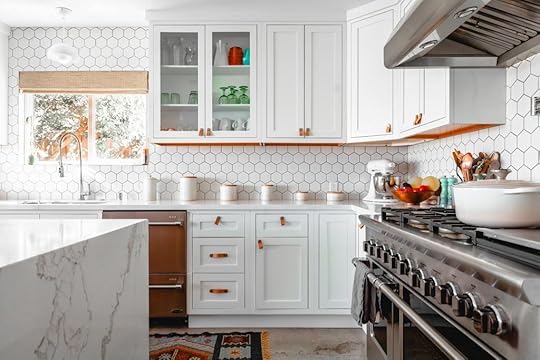
If you’re like most of us, you’re spending more time than ever in your kitchen. A well-organized kitchen not only helps you be more efficient while cooking, but also saves valuable space. And when you organize your kitchen, it looks better, making it a more inviting place.
4 Steps to Organize Your Kitchen
Declutter first
The first step is to declutter your kitchen. Throw away expired spices, put away seldom-used items and keep out only the items you use on a daily basis.
Don’t just do a minimal declutter — plan to do a deep sweep, digging out what’s hiding in kitchen cabinets and junk drawers. Have a large trash bag or box handy to collect cookware and other kitchen stuff to give away or donate.
Give your kitchen a clean sweep
After you’re done with your decluttering, deep clean your kitchen using your favorite cleaning products and tools. If it’s been awhile since you gave your kitchen a good cleaning from top to bottom, now’s the time.
Before putting everything back, wipe shelves and vacuum drawers. Clean the tops and fronts of your appliances and cabinets. Pay special attention to the area surrounding the handles or knobs on cabinet doors. If grime is left too long, it can bond with paint or stain, making it impossible to remove the grime without removing the paint or stain.
Organize with zones
Create zones to keep your kitchen more organized. The three major working areas in your kitchen are near the fridge, the oven and the sink. Think about where you use items and let that dictate where they should be stored.
For example, you might decide to keep daily-used utensils such as dishes, mugs, cups, silverware and serving utensils near your dishwasher. Store pots, pot holders and baking utensils near your oven. Create a pantry zone to keep dry spices and other dried goods – maybe near your refrigerator so that all of your food is in one general location.
Apply “small space” organizing solutions
You don’t need to give away things you love just because you have a small kitchen. You just need to get creative in utilizing all of the space available, especially hanging space.
Hooks are a great organizing tool for serving utensils, mugs and more. Freestanding risers on shelves are another simple organizing solution that transforms unused space.
If you have limited countertop space for food preparation, you might consider installing a slide-out prep station. Position it so that you can easily scrape peels and scraps into the garbage.
One final note: While you may be tempted to buy organizing products to organize your kitchen, do that AFTER you declutter so you know exactly what, if anything, you need.
###
Katie Tejada is a writer, editor, and former HR professional. She enjoys writing about decorating trends and innovations for the home, but also covers developments in HR, business communication, recruiting, real estate, finance, law, and investing.
Full Disclosure: Some links in this blog post are affiliate links. If you click a link and purchase something, I will get a small percentage of the sale (at no additional cost to you). Please know that I only recommend products or services I use personally and/or believe are of value to my readers.
Photo by Creatv Eight on Unsplash
The post How to Organize Your Kitchen appeared first on Declutter Your Life with Donna Smallin Kuper.
July 24, 2020
6 Bathroom Organization Hacks
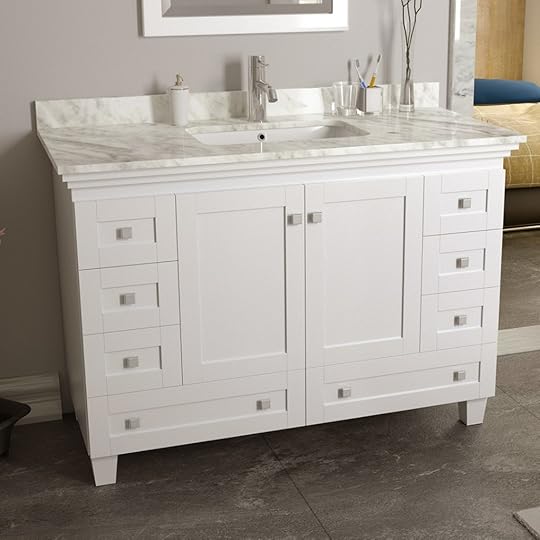
With all the products it takes to maintain personal hygiene, it’s easy for a bathroom to become cluttered.
When you’re getting ready in the morning, do you waste precious time hunting for shaving cream, a favorite eyeliner or that special perfume you like to use once in a while? If so, it’s time to do something about it and organize your bathroom. Bonus: A clean and orderly bathroom usually looks bigger and more inviting, too.
Thankfully, there are many options for bathroom organization and storage. With a few helpful bathroom organization hacks, you can keep counters clear and products easily available. Take a look at the following ideas to achieve a tidy space that makes daily grooming a breeze.
Declutter regularly.
As mentioned previously on this blog, decluttering is not a one-time endeavor; it’s a lifestyle. This is as true in the bathroom as anywhere else in the home. If you’re not getting rid of stuff regularly, expect to be back in this disorganized situation soon.
Take an afternoon to go through all cabinets, shelves and drawers of toiletries, throwing away anything that is expired, empty and/or unwanted. Then, once a month or season, briefly scan your storage and declutter again.
Store like items together.
After you have determined what needs to stay in the bathroom, it’s time to put like items together. Keep all the hair products in one spot, the bath items on the same shelf, etc. Then designate specific places in the bathroom for each grouping.
When toilet paper is always in the basket on the floating shelf above the toilet, for instance, you won’t have to search for it when you need a new roll. When all your makeup is in the top drawer of the vanity, getting ready becomes much faster.
Straighten drawers with organizers.
Got bathroom drawers where the clutter makes it hard to find anything? Stay organized by sliding a kitchen utensil tray or plastic baskets from the dollar store into these spaces. Use organizers to compartmentalize makeup, toothbrushes, cotton balls and more — all in a neat, visually friendly manner.
Make better use of cabinet space with a lazy Susan.
You know how it is: You open the vanity cabinet and try to remember what’s buried behind the bottles of lotion and hairspray. What did you throw in there months ago? To make better use of cabinets, add a lazy Susan that can spin to reveal a larger number of items. This is a great way to store hair products, perfumes, nail polishes and cosmetics for quick access.
Take advantage of magnetic strips.
The size of bobby pins, tweezers and nail clippers means they’re easy to lose in the nooks and crannies of a bathroom. Try this smart solution: Attach a magnetic strip to the inside of a cabinet door, and stick bobby pins and other metal hair clips on it. Use another for small bathroom tools such as cosmetic scissors, metal nail files, tweezers and nail clippers. You’ll never have to search for these products again.
Add a shelf above the bathroom door.
If you’re truly pressed for storage space and want to maximize every area, consider installing an open shelf above the bathroom door. This out-of-the-way storage space is the ideal location for items you don’t need often, such as extra toilet paper, boxes of tissues and spare bottles of shampoo.
These are just a few suggestions — you can probably think of many more! Clearly, there are lots of ways to have fun with bathroom organization, get creative about storing products and find new uses for old items. When you’re ready to transform your bathroom into an attractive, user-friendly space, set aside a little time and get started with these bathroom organization hacks.
###
Erica Garland is Content Marketing Manager at Modern Bathroom and has 15-plus years of experience in the bathroom renovation industry. Modern Bathroom sells a variety of products you would need for any bathroom renovation project. With such a large selection of vanities, faucets, sinks, toilets and showers, Modern Bathroom is sure to have the perfect piece to give your bathroom an updated look.
The post 6 Bathroom Organization Hacks appeared first on Declutter Your Life with Donna Smallin Kuper.
July 10, 2020
Essential: Rethinking what is and is not

In the past couple of months, the world has redefined what the word essential means. Essential workers, essential quarantine supplies, and the essential people in our lives. I know I made some decisions about what is and what is not essential in my life during this time, how about you?
Many of my clients were decluttering a lot of non-essential items
that were suddenly not making the cut in their homes. Not leaving your home for
weeks on end can do that; what becomes essential rises to the top and the rest
becomes C.R.A.P. (Clutter that Robs Anyone of Pleasure).
Living through a quarantine has helped me realize that I designed
the spaces in my home to hold the essential items that make my life easier and
that make me happy. Letting go of the CRAP is an on-going process for me and it
helps me maintain sanity in a face-paced world. It also provides a peaceful
sanctuary for me and my family. Here are the essential spaces in my home and
how to keep them manageable by eliminating the non-essential items:
Bedroom
Include: Comfortable clothing and shoes that really fit and make you feel good about yourself; a bedside table that includes only the items you use on a nightly basis; comfortable mattress and bedding; and décor that calms you and makes you smile.
Let Go: Everything that doesn’t fit, is worn out, makes you feel bad about your body, haven’t used or worn in years, or décor that invokes bad karma or negative feelings.
Bathroom
Include: One shampoo, one conditioner, one soap (or body wash), the make-up you actually use, the medications you currently take, limited hair and face products and pretty towels.
Let Go: Everything that does not work as promised, hasn’t been used in years, is expired or old, and stained or ratty towels.
Kitchen
Include: Items that can do double or triple duty, a realistic amount of storage containers, single layer of mugs and glasses, and plenty of healthy snacks.
Let Go: Gadgets used once or never, appliances or items you no longer use, too much of anything, extraneous kitchen utensils, and snacks that don’t encourage healthy eating.
Office
Include: Office supplies and current project files within arm’s reach, library of resource material you use on a regular basis, updated electronics and office equipment that saves time and increases efficiency and décor that inspires you and supports your ambitions.
Let Go: Outdated office equipment, old files and tax returns no longer needed, books not referenced in years, and décor with a negative vibe.
Finally, I hope that as we go forward into the new normal, you
have redefined what is essential in your life. Do not let anyone tell you what
is essential for you or your life, and that includes people or stuff.
Click Here for my handout on Organizing Hints for Every Room in your Home!
Vali Heist is a Certified Professional Organizer®, author, and self-proclaimed CRAP expert. Vali defines CRAP as Clutter that Robs Anyone of Pleasure. Her book, Organize This! Practical Tips, Green Ideas, and Ruminations about your CRAP, is available for Kindle and Nook readers. Vali’s goal is to share organizing solutions that help her readers and clients organize their best life at home and live in the CRAP-free zone.
The post Essential: Rethinking what is and is not appeared first on Declutter Your Life with Donna Smallin Kuper.
June 23, 2020
Organizing Questions and Answers – Part 2
As the author of 11 books on how to declutter, organize and simplify your life, I get a lot of questions from my readers. I thought it might be helpful to share some of these organizing questions and answers with you in a series of blog posts. Here’s Part 1 if you missed it.
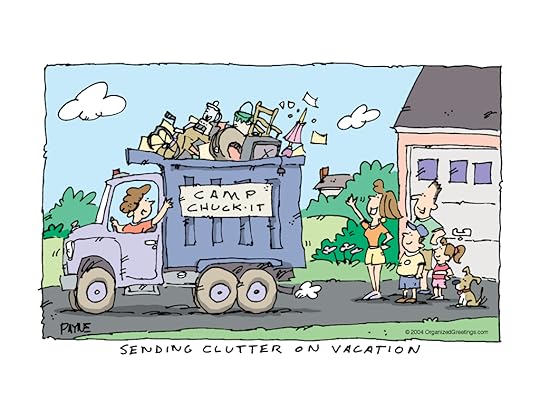
Q. How long do I need to save paperwork?
What is the length of time you should keep paid bill stubs, insurance records, receipts, and miscellaneous paperwork? I know you should keep three years of tax documents, but I’m not sure about the rest and I’m nervously keeping too much paperwork that is getting out of control! I can’t get a system going and have piles everywhere, which of course, stresses me out.
A. Keep only for legal or financial reasons.
The main determining factor for deciding what to keep and what to toss is this: Do you need to keep it for legal or financial reasons? If yes, save the paper.
As to what records you need to keep and for how long, please refer to this IRS publication. Some things you won’t find in this document, but may be helpful, include the following:
Keep ATM and debit card receipts only until you have received your bank statement (or reviewed your online statement) and everything checks out. Then shred them.
Keep credit card receipts until you have verified the amounts on your credit card bank statement. Then shred them.
EXCEPTION 1: If the purchase is a business expense, file the receipt.
EXCEPTION 2: You may want to save all receipts for a few months in case you decide to return something. Set up a folder for “2020 Receipts.”
EXCEPTION 3: You may want to save receipts for more expensive items that come with a warranty – file them with the product warranty and/or manual.
Unless they are business expenses, most bill statements can be thrown away as soon as they are paid: cable, water and sewer, telephone, electric. There is no legal or tax reason to save these statements and they do not prove payment. Your cancelled check proves payment.
Keep only current insurance policy documents. Shred out-of-date documents.
You mentioned knowing that you need to keep tax documents for three years. I just want to clarify for readers that this needs to be three completed years plus the current year – and that’s the minimum requirement. If you have any reason to worry about a tax audit, you may be more comfortable keeping the documents for seven years. Keep the actual prepared tax return documents indefinitely.
If you would like a simple filing system, I highly recommend Freedom Filer. It’s actually a self-purging system that is designed to help you determine what to keep and what you can toss.
I hope this information is helpful and will enable you to get rid of a lot of unnecessary paper clutter. Just please be sure to shred or burn any documents that include your name plus any account numbers to decrease the possibility of identity theft.
Q. What’s a good rule for maintaining an organized closet?
I know you’re going to think this is a really stupid question, but what is a good rule of thumb for keeping a wardrobe within a reasonable boundary? What I mean is: How many pair of shoes do I really need? How many pair of pants? How many t-shirts? ow many dresses? Do you have any suggestions for how to cut back on the number of clothes I have? I feel like they’re taking over my life.
A. Let go of anything that doesn’t make you look good and feel good when you try it on.
I don’t think that’s a stupid question at all! There is a rule of thumb, but it doesn’t have to do with how many items you keep.
The rule of thumb is: If you haven’t worn something in a year or more, let it go. Now that’s a pretty general rule. I kept two pair of shorts for six years that didn’t fit me on the off chance that I might be able to get into them again, which I did. But I would not save an entire wardrobe of clothes that no longer fit – just your favorites, just in case.
Another thing I recommend is to model everything you own in front of a trusted friend or family member. You already know what feels good on you. The friend can help you decide what looks good on you. Get rid of anything that doesn’t make you look and feel good when you wear it. Tip: It helps to start by pulling out your favorite clothes – the “for sure” keepers.
If you have trouble letting go of clothing, you might want to do it in stages. Go ahead and pare down your wardrobe and then put the cast-offs in a box or another closet somewhere. If another six months to a year goes by and you haven’t miss them, then you probably never will.
You might want to read this blog post featuring photos of my closet and tips for keeping your closet organized.
One last piece of advice. Keep only the current season’s clothing in your closet and drawers – and only items that currently fit. It will really simplify your life!
Do you have organizing questions?
What’s your organizing question for me? Leave a comment!
Full Disclosure: Some links in this blog post are affiliate links. If you click a link and purchase something, I will get a small percentage of the sale (at no additional cost to you). Please know that I only recommend products or services I use personally and/or believe are of value to my readers.
The post Organizing Questions and Answers – Part 2 appeared first on Declutter Your Life with Donna Smallin Kuper.
June 16, 2020
Organizing Questions & Answers – Part 1

As the author of 11 books on how to declutter, organize and simplify your life, I get a lot of questions from my readers. I thought it might be helpful to share some of these organizing questions and answers with you in a series of blog posts. Here’s part one.
Q. Help! I’m moving after 42+ years and struggling with the process.
I am in the process of trying to move after living here for over 42 years five weeks from today. It’s a VERY frustrating process. I have many, many boxes, but most are still not filled. I still haven’t gone through any of the drawers in every room and have four more clothes closets to clean out.
To say I feel very overwhelmed is an understatement. My husband, who passed away 6 years ago, never threw anything away and I haven’t been much better. Any help and advice you can give me will be GREATLY appreciated. I do enjoy your newsletters and look forward to someday being organized even at the age of 73!! I know my life would be much better.
A. Purge first, then pack.
If you have four-plus closets of clothes, I’m pretty sure you have way more clothes than you need. What I would do is pull out your favorites – the ones you wear 80% of the time – and maybe a few for special occasions. Give away the rest.
Just think of the good you will be doing for someone, somewhere who maybe has only the clothes on her back – perhaps a victim of domestic violence who finally decided to get out of a bad situation, leaving all of her possessions behind. Regardless, clothes you never wear are just cluttering up your closets and your life – and making the process of packing up more difficult.
I know that this might be hard, but it’s time to let go of all those things your husband was saving. It was his choice to keep them, but you can make a different choice. It’s okay. As you go through his things and yours, ask yourself: Do I use this? Do I love it? If no, let it go.
Spend the next day or two filling up as many trash bags as you can. Trash or recycle anything that’s not worth fixing or has seen better days. Bring the rest to your nearest donation center or schedule a free pickup.
Choose to keep only things that are important to YOU right now, at this time in your life. Packing will be so much easier when you are packing with just what you need to start the living the organized life you’ve always wanted.
Q. I really need physical help [to get organized], but I am afraid to ask for it.
I need an “ump” to start things that need to be organized or gone through. Every day, I think that today might be the day, and then I remember I have another doctor’s appointment or something else that is more urgent. I have been thinking this way for a few years now, since I got ill. These are not excuses, just reality. I’ve even thought that moving might be the answer! I really need physical help, but I am afraid to ask for it.
A. I always say, “It never hurts to ask.”
Think of it this way: If you don’t ask, then you are denying someone who cares about you an opportunity to show how much they care!
Think about a project that you would love to accomplish and then think of the best person to ask for help. You can say, “I hate to even ask, but I’ve been wanting to [do whatever] for some time now and I really can’t do it myself. Would you be willing to give me a hand?” I’m guessing you’ll get a “yes.” Then set a date and time to get started.
Alternatively, if you have the means, consider hiring a professional organizer who can not only help you get organized, but also teach you a few tricks for staying organized.
Q. The minute I get rid of something, I miss it.
I am the most cluttered person you could meet. I can’t get rid of items, because I attach feelings to them for one reason or another. And then I can’t part with them. The area in my house that people see is very presentable, but my closets are a wreck and my garage is beginning to look like a used furniture store. My husband and two children are super organized and do not have any problem getting rid of things. But me, the minute I get rid of something, I am missing it or needing it. And I dwell on it for days.
A. You are not alone.
First, stop beating yourself up. You are not alone. Once we bring stuff into our lives, it becomes a part of who we are, which explains the attachment you feel for your things. Some people are just more attached than others. I’m willing to bet that you are also an extremely loyal person who is very attached to family and friends!
That said, clutter is creating a problem for you, so it’s time to do something about it. Don’t focus on what you are getting rid of; it’s just stuff. Old stuff that is cluttering up your home! Think about how wonderful it will feel not to have to worry about it anymore.
What’s the worst thing that could happen if you let go of things you no longer love or use? IF you need a thing again someday (and that’s a big IF, especially for all that furniture in the garage), could you get it again pretty easily and inexpensively? Probably. Let that thought comfort you.
Give yourself permission to let go of the clutter. Be the wonderful person you are and donate it to help others who are less fortunate. That’s something you can feel good about. Focus on that. I think you know in your heart that the best things in life are not things.
Do you have organizing questions?
What’s your organizing question for me? Leave a comment!
The post Organizing Questions & Answers – Part 1 appeared first on Declutter Your Life with Donna Smallin Kuper.
May 26, 2020
Quarantine Cleaning for Stress Relief
If you’re under quarantine, you may have realized how cluttered your home is, and how uncomfortable it can make you feel. You may have also been bitten by the quarantine cleaning bug and discovered just how difficult it is to clean a home full of stuff you don’t need. Either way, it’s time to declutter.
None of us have faced a situation like the one we’re in now.
The COVID-19 pandemic is a frightening, frustrating and stressful time for
almost everyone. Some of that stress may be a result of our immediate
environment. While we can’t do anything about the greater issue, we can do
something about our homes.
7 Quarantine Cleaning Ideas
Your quarantine cleaning and decluttering doesn’t need to be a major home makeover. In fact, it’s easier to do as a series of small projects. If you tackle one or two per day, you may find it easier to clean the spaces and things that need it. This approach also ensures that you have something meaningful to do for several days in a row. Plus, you won’t scrimp on the details because you’re tired or have run out of steam.
1. Knick-Knacks and
Odds & Ends
It’s amazing how many cheap and cheerful knick-knacks we can
amass over the years. Whether we bought them on a whim at the fair because we
thought they were cute, or they were freebies that came with a burger or a box
of cereal, they usually end up being nothing more than dust collectors.
If something has great sentimental value, you may want to keep it, but if not, it’s time to let it go. If you cannot bring yourself to chuck out or to recycle your knick-knacks, consider selling them on a collector’s market.
2. Unused Kitchen
Appliances
Whether they’re waffle makers, ice cream machines, rice
cookers, bread makers, microwave cooking sets, or pretty much anything else;
kitchen appliances you haven’t used in years do nothing but take up space. If
you have appliances that are gathering dust, give them a good clean and get rid
of them. Someone else can surely get good use out of them.
3. Under the Sink
Whether in the kitchen or the bathroom, the cupboard under
the sink can be something of a black hole for clutter and dirt. Include yours
in your COVID-19 quarantine declutter by emptying them out, giving the shelves
a thorough clean, and then replacing the items you need and use. Donate, sell,
or throw out what you do not need.
4. The Pantry or
Grocery Cupboard
Dedicate one day of your decluttering project to sorting out
your pantry or grocery cupboard, as well as your fridge and freezer. The first
thing to do is to throw out expired food. Next, pass on items you know you are
not going to eat or use to your local food bank. Be sure to clean the shelves
before you replace the items you’re keeping.
5. Bedroom Tables and
Drawers
The tables and drawers in our bedrooms can become
repositories for all sorts of clutter. If the nightstand in your bedroom is
crammed with plush toys, old cosmetics and personal grooming products, and old
jewelry, it’s time to tackle them.
Throw out old cosmetics, consider giving the fluffy toys to a children’s hospital, and think about selling the jewelry you no longer wear. There’s a good demand for vintage jewelry and you can sell your unwanted pieces and use the money for something you really want, or will wear.
6. The Home Workspace
Whether it’s a small desk in the lounge or an entire room
devoted to the purpose, a home workspace can become cluttered in no time at
all.
If you work from home, include your workspace in your decluttering project. Shred old mail and recycle the paper along with old pamphlets and junk mail. Pack your office supplies and stationery in a box or drawer that you can store in a cupboard, cabinet, or closet until needed.
7. Your Closet and Drawers
If you’ve been keeping clothes you haven’t worn for years,
or have closets filled with shoes you no longer need, now is the perfect time
to sort through them. It’s amazing what you can accumulate without even
realizing it. You can donate or sell unwanted clothing, and you can sort and
separate it according to what your plan is.
Start with your socks and underwear drawers and move on to your summer and winter clothes, removing any clothing that you have not worn for a while, and probably never will. You may even find one or two items that you’d forgotten about and can wear them when your quarantine period comes to an end.
But What If My Local Donation Center is Closed?
Many charities, goodwill stores, and community outreach projects are not accepting donations at this time. This may be due to health concerns and social distancing, restrictions on movement, or being under-staffed. Once you’ve cleaned and packaged whatever it is that you want to give away, keep it in one place until you are able to make your donation.
If you want to sell items, you’ll need to make sure they’re clean too, so spend some time polishing, dusting, washing or packaging whatever you decide to put on the market.
Feeling inspired yet? Quarantine cleaning gives you the perfect opportunity to start decluttering your life. You’ll feel better and your home will look better too. What’s more, those who receive donations are sure to appreciate them, and if you choose to sell unwanted items you can look forward to a bit of extra money coming your way.
The post Quarantine Cleaning for Stress Relief appeared first on Declutter Your Life with Donna Smallin Kuper.
The One-Minute Organizer Blog
- Donna Smallin Kuper's profile
- 45 followers



